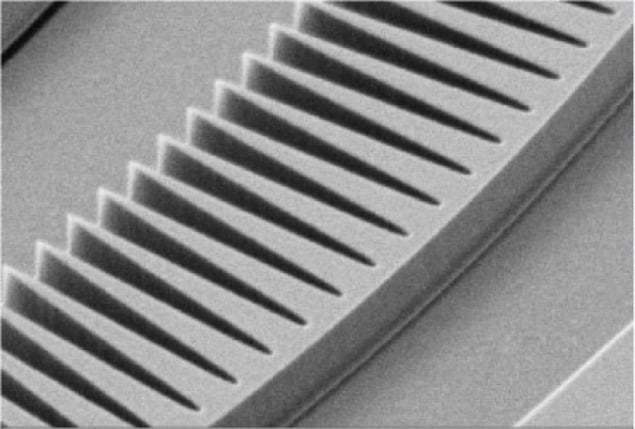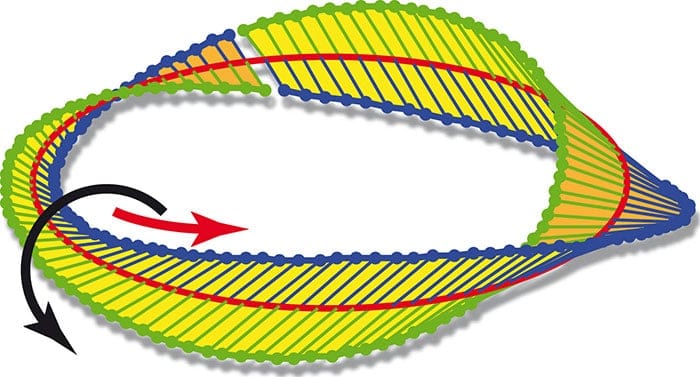
A Möbius strip for light has been created by researchers in the US. Light moving around the ring-shaped microresonator only returns to its original configuration after doing two loops of the device. Described as a first, the device was designed and built by Xiyuan Lu at the National Institute of Standards and Technology in Maryland and colleagues – and it could be used to create new optical technologies.
The Möbius strip is a unique topological structure that can be created by putting a single twist into a strip of paper and then gluing both ends together to create a loop. Drawing a line along the surface of the strip involves going along both sides of the strip before arriving at the starting point – going twice around the centre of the loop.
In their study, Lu’s team have shown how the same topology can created for light waves travelling around tiny ring-shaped waveguides (called microresonators) that have whispering gallery modes (WGMs). A whispering gallery is circular or similar structure that reflects sound or light multiple times such that it travels around the gallery and returns to its place of origin. The name originates from the ring-shaped gallery under the dome of St Paul’s Cathedral in London, where a speaker can hear their own voice after it has reflected several times around a circular wall.
Integer values
When a WGM occurs in an optical microresonator, the phase of the electric field associated with the circulating light will complete an integer number of oscillations before returning to the same value when the light returns to the starting point. As a result, the light in the WGM has integer values of angular momentum.
In previous research, Lu and colleagues created a WGM microresonator with and even number of regular teeth-like indentations on the inner side of the ring. This created a photonic crystal, which had the effect of slowing the light’s progression around the ring by a factor of ten. This allowed the team to further manipulate the light.
Notched ring

How to twist light into a Möbius strip
In their latest study, the researchers created an odd number of notches to a similar ring. Made of silicon nitride, the ring itself was 50 micron in diameter and had 333 notches. The result is that light circulating in the loop has half-integer values of angular momentum. The 333 notches meant that the angular momentum of the light existed in multiples of 333/2. Furthermore, the light must go around the loop twice before returning to its original electric-field phase. As it follows this path, the orientation of the light wave’s electric field traced out the topological structure of a Möbius strip made from paper.
Lu’s team were able to characterize the modes of light in their microresonator by observing light that scatters out of the ring. For the fundamental mode of the device, one bright spot was observed on the ring. Higher modes were also observed, characterized by odd numbers of spots: three, five, seven and nine. This is unlike their previous microresonator, which had an even number of teeth and had an even number of bright spots.
Describing their work in Physical Review Letters, the researchers say that light with fractional angular momentum generated by their device could find use in a range of applications sensing and metrology, nonlinear optics, and cavity quantum electrodynamics.
- Coinsmart. Europe’s Best Bitcoin and Crypto Exchange.Click Here
- Platoblockchain. Web3 Metaverse Intelligence. Knowledge Amplified. Access Here.
- Source: https://physicsworld.com/a/mobius-strip-for-light-could-give-optical-technologies-a-boost/



